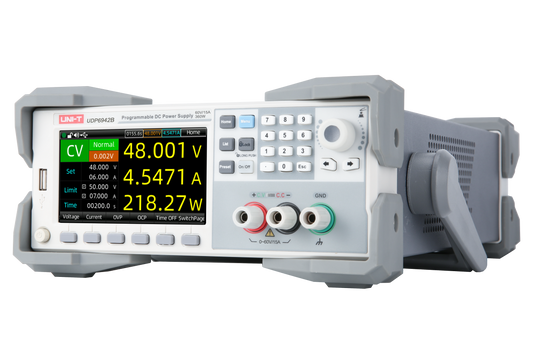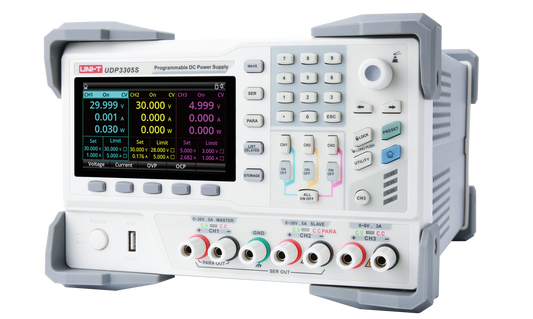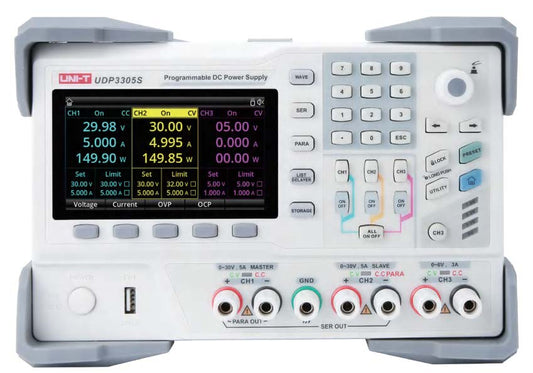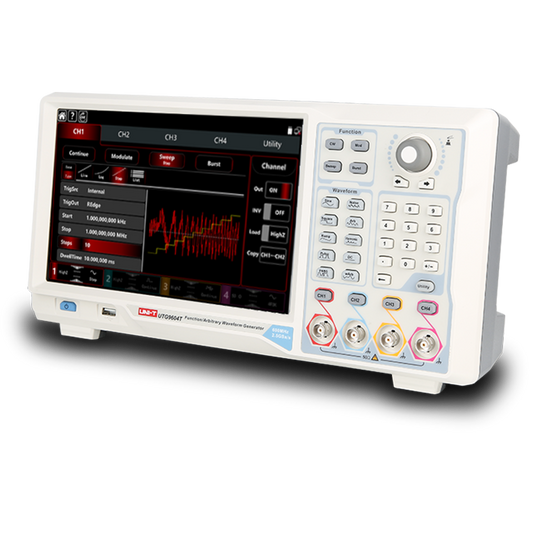The Unmatched Benefits of Mixed Signal Oscilloscopes in Electrical Design
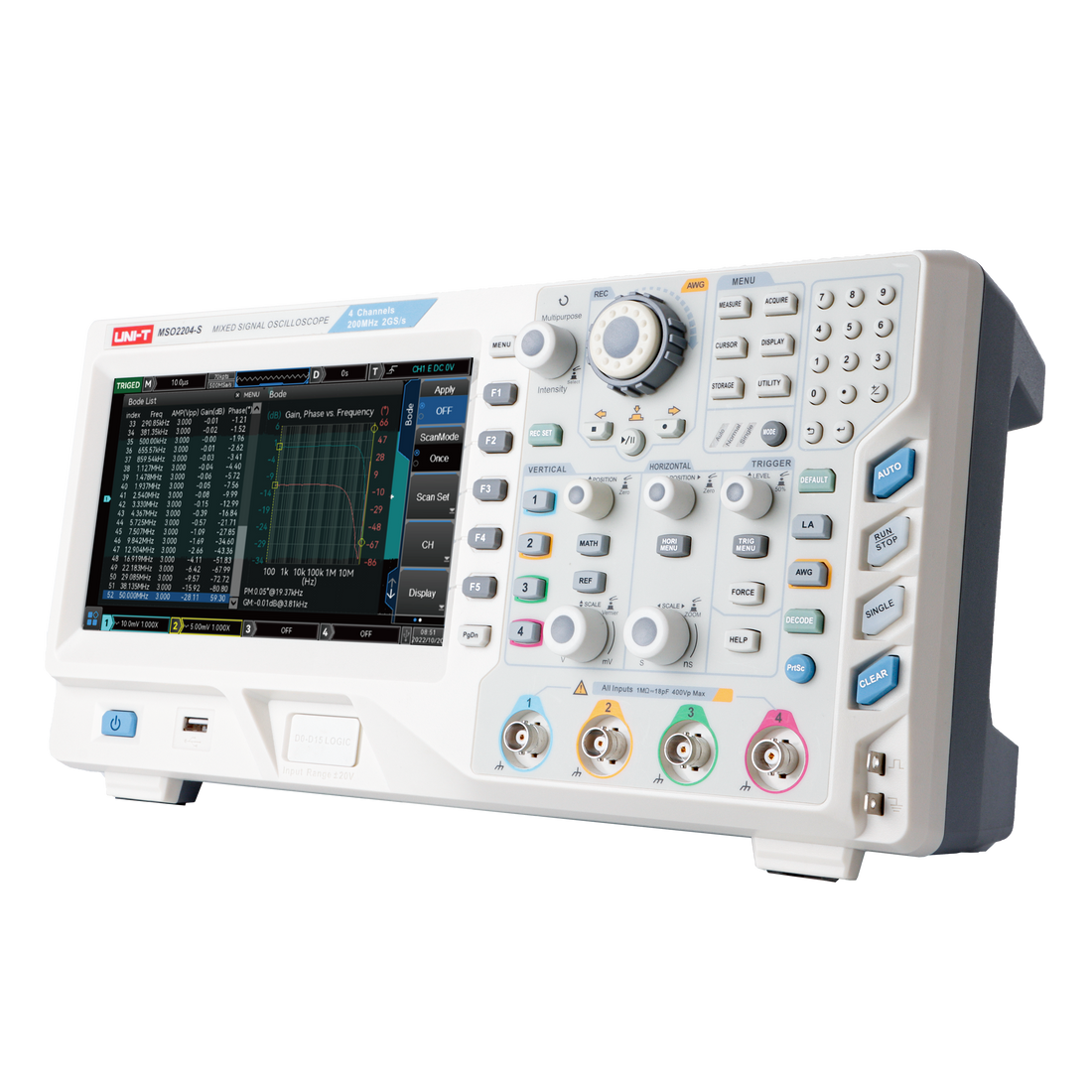
In the rapidly evolving field of electrical design, precision, efficiency, and comprehensive analysis are paramount. Mixed Signal Oscilloscopes (MSOs) have emerged as indispensable tools for engineers, bridging the gap between analog and digital domains. This article delves into the functionality and advantages of MSOs, showcasing how they enhance accuracy, efficiency, and overall design quality in electrical projects. Additionally, we will explore the significance of integrating a signal generator with an MSO to further improve testing and analysis capabilities.
Functionality of Mixed Signal Oscilloscopes
A Mixed Signal Oscilloscope (MSO) integrates the capabilities of a traditional oscilloscope with those of a logic analyzer. This hybrid instrument allows simultaneous capture and analysis of both analog and digital signals, providing a holistic view of a system's performance.
Key Functionalities
- Analog and Digital Signal Capture: MSOs are equipped with both analog and digital channels. Typically, they offer 2 to 4 analog channels and up to 32 digital channels, enabling concurrent monitoring of multiple signal types.
- Mixed Signal Triggering: MSOs can trigger on complex events involving both analog and digital signals. This feature is crucial for capturing and analyzing interactions between different signal domains.
- Protocol Analysis: Many MSOs support real-time protocol decoding (e.g., I2C, SPI, UART), simplifying the debugging process for embedded systems and communication interfaces.
Significance of Signal Generators with MSOs
A signal generator is a device that produces electrical signals with set characteristics, such as amplitude, frequency, and waveform shape. When used in conjunction with an MSO, a signal generator significantly enhances testing and diagnostic capabilities.
Benefits of Using Signal Generators with MSOs
- Controlled Test Signals: Signal generators can produce precise, repeatable test signals, which are invaluable for validating and calibrating circuits. This ensures that the system's response can be accurately measured under consistent conditions.
- Stimulus-Response Testing: By generating known input signals and observing the output with an MSO, engineers can perform comprehensive stimulus-response testing. This helps in understanding how a circuit or system behaves under various conditions.
- Fault Injection: Engineers can use signal generators to inject faults or anomalies into the system. Observing how the system handles these conditions with an MSO, aids in identifying potential weaknesses and improving robustness.
- Timing Analysis: The combination of a signal generator and MSO allows for detailed timing analysis. By providing a synchronized signal, engineers can precisely measure propagation delays, timing jitter, and other critical timing parameters.
Advantages of Using Mixed Signal Oscilloscopes
Enhanced Accuracy
- Comprehensive Signal Analysis: By capturing both analog and digital signals, MSOs provide a complete picture of a system's operation. This dual capture capability ensures that no critical events are missed, significantly improving diagnostic accuracy.
- Time-Correlated Measurements: MSOs allow engineers to correlate analog waveforms with digital states precisely. This correlation is vital for identifying timing issues, glitches, and other anomalies that could affect system performance.
Improved Efficiency
- Integrated Tool: The MSO's ability to function as both an oscilloscope and a logic analyzer reduces the need for multiple instruments. This integration streamlines the workflow, saving valuable bench space and reducing setup time.
- Advanced Triggering: The sophisticated triggering options available in MSOs enable engineers to isolate specific events or conditions quickly, speeding up the troubleshooting process.
- Protocol Decoding: With built-in protocol analyzers, MSOs can decode and display communication protocols directly, eliminating the need for separate protocol analyzers and accelerating the debugging process.
Superior Design Quality
- Holistic View of System Behavior: The dual-domain analysis capability of MSOs allows for a more thorough examination of system interactions. This comprehensive insight leads to better-informed design decisions and higher quality outcomes.
- Faster Debugging: The efficiency gains from using an MSO translate directly into faster project completion times. Engineers can identify and resolve issues more swiftly, ensuring that designs meet specifications and deadlines.
- Design Verification and Validation: MSOs are essential for verifying and validating complex designs, particularly those involving embedded systems and mixed-signal ICs. Their ability to monitor and analyze both signal types ensures that all aspects of the design are functioning correctly.
Real-World Examples and Case Studies
Example 1: Debugging a Microcontroller-Based System
Consider an engineer working on a microcontroller-based system with an I2C communication interface. Using a regular oscilloscope, the engineer can observe the analog signals but lacks visibility into digital communication. An MSO, however, can simultaneously capture the I2C signals and the power supply’s analog behavior. This capability allows the engineer to correlate power fluctuations with communication errors, leading to a faster and more accurate diagnosis. Integrating a signal generator further allows the engineer to inject specific I2C signals to test system response under controlled conditions.
Example 2: Mixed-Signal IC Testing
In the development of a mixed-signal integrated circuit (IC), it's crucial to ensure that the digital control logic properly interfaces with the analog components. An MSO can monitor both the digital control signals and the analog outputs, providing a clear picture of the IC's overall functionality. This comprehensive analysis is instrumental in identifying and correcting timing mismatches or signal integrity issues early in the design cycle. A signal generator can be used to provide precise analog inputs, helping to validate the IC's performance under various conditions.
Case Study: Automotive Electronics
In the automotive industry, electronic control units (ECUs) manage various vehicle functions, from engine control to infotainment systems. These ECUs often involve complex interactions between analog sensors and digital control logic. An automotive electronics team used an MSO to develop and debug an ECU. By simultaneously analyzing sensor outputs (analog) and control signals (digital), they were able to optimize the system’s performance, reducing development time and improving the ECU's reliability. Using a signal generator, they simulated various sensor inputs to ensure the ECU responded correctly under all scenarios.
Conclusion
Mixed Signal Oscilloscopes are transformative tools in the realm of electrical design. Their ability to capture and analyze both analog and digital signals simultaneously provides engineers with a comprehensive view of their systems, enhancing accuracy, efficiency, and design quality. The integration of a signal generator further amplifies these benefits by providing controlled test signals, enabling stimulus-response testing, fault injection, and precise timing analysis. Whether debugging microcontroller-based systems, testing mixed-signal ICs, or developing advanced automotive electronics, MSOs offer unparalleled benefits, making them essential instruments for modern electrical design projects. By leveraging the advanced functionalities of MSOs and signal generators, engineers can achieve more reliable and higher-performing designs, ultimately driving innovation and excellence in the field.
Investing in a Mixed Signal Oscilloscope (MSO) with a built-in signal generator offers significant cost-efficiency, making it a smart choice for businesses and professionals in the electrical design industry. By integrating these two crucial functionalities into a single device, users can eliminate the need to purchase separate pieces of equipment, which can save thousands of dollars. Overall, the investment in an MSO with a built-in signal generator offers compelling long-term value, combining financial savings with operational efficiencies and advanced testing capabilities.



